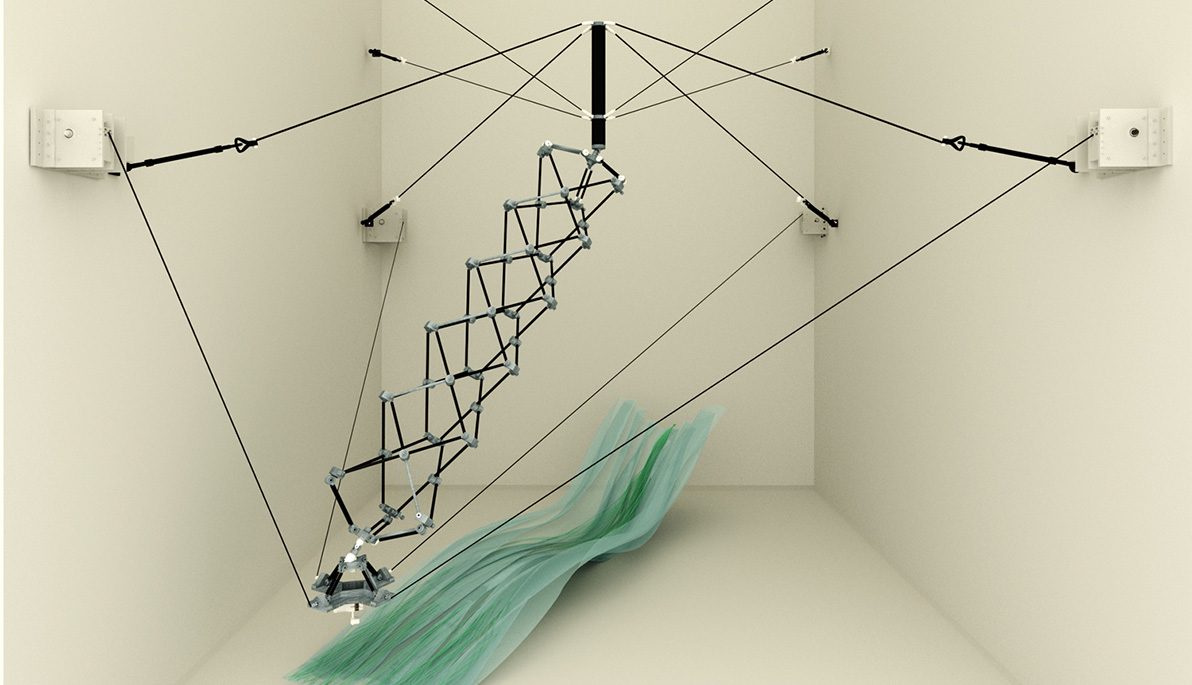
News Brief: 3-D Printed Houses Are Closer Than You Think
August 15, 2018
Pictured: The site-specific adaptable 3-D printer can be packed up and taken anywhere. Its adaptable design allows it to be used inside or outside opening the door to a host of possibilities: 3-D printed houses, furniture, and more. The e-chaise lounge, above, was built with the site-specific adaptable 3-D printer. Designed by Pablo Lorenzo-Eiroa, Gabriel Munnich, Yaoyi Fan, Pablo Toubes-Reiger, Nelson Montas, Zhiyi Cheng, Yilan Dong, and ADG Engineering.
Imagine you can construct a house using a 3-D printer.
With the site-specific adaptable 3-D printer you just might. The printer is designed by Pablo Lorenzo-Eiroa, associate professor in NYIT School of Architecture and Design, and a team of architects at e(eiroa)-Architects.
The unique aspect about the printer is that it does not depend on an external structure in order to use it. And unlike traditional 3-D printers, this one can go anywhere.
“It is a mobile structure and can be adapted to many circumstances and conditions,” said Lorenzo-Eiroa. “Since it [is built] with cables and engines that can be attached to an existing condition and operate, it can be packed into a portable suitcase.” Which is what he did when he took it to Venice where it is on display at the Time-Space-Existence exhibit during the Venice Architecture Biennale.
The site-specific adaptable 3-D printer features a flexible tensegrity structure with a robotic cable-driven mechanism that prints through an extendable arm reaching all locations inside its range.
Because it can be easily adapted, the possibilities are virtually endless. “Our [printer] can be used anywhere—inside, outside—and it can be used to build furniture and buildings like houses and even larger party wall buildings,” explained Lorenzo-Eiroa.
For the exhibit in Venice, he constructed an e-chaise lounge chair. To build it, he first used a 3-D scanner. This allows the chair to be custom-built to any body.
“The overall idea was to develop a fully comprehensive process in which the chair design adapts to the specifics of a person and then material parameters are programmed to react to the heat of the body and deform accordingly, offering more comfort and another time-based dimension in the design or a 4-D print,” said Lorenzo-Eiroa.
The site-specific adaptable 3-D printer and e-chaise lounge are on display through November 2018 at the Palazzo Bembo during the Venice Architecture Biennale.
More Features

An Alumnus’ Commitment to the Environment
As an energy management graduate from New York Tech’s Vancouver campus, Jasdeep Gulati (M.S. ’22) is highly invested in educating people about environmental and climate sustainability.

Vancouver Faculty Win University-Sponsored Research Awards in New Program
The new Global Impact Research Grant (GIRG) program has been developed to keep Vancouver-based faculty connected to faculty and research projects being conducted on the university’s New York campuses.

Studying Climate Change One Degree at a Time
Junhua Qu (M.S. ’24) began her collegiate journey in Beijing. But, her interest in climate change took her to New York Tech’s Vancouver campus to study energy management.
